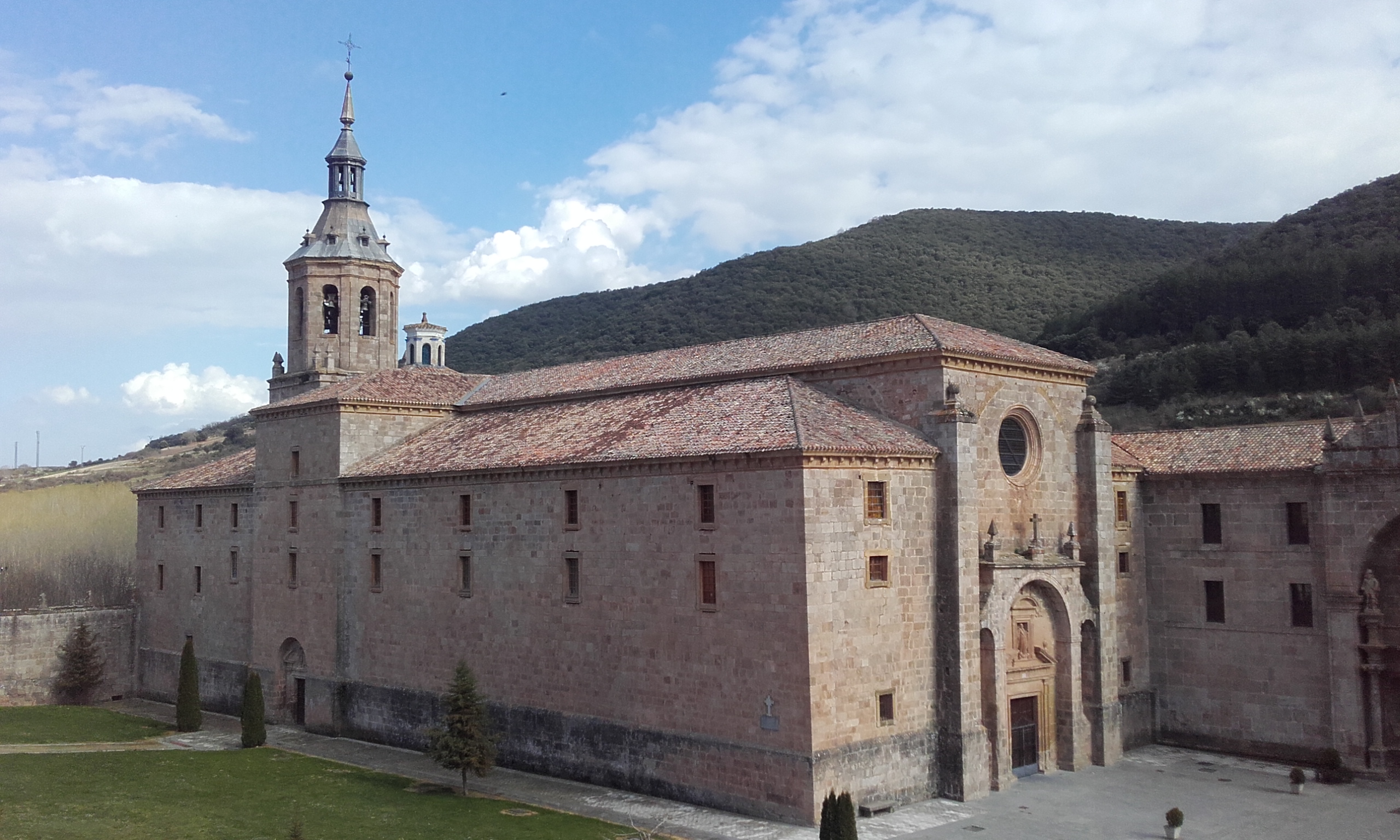Last updated September 2022
As promised, we are still in La Rioja but now we are in the monastery dedicated to San Millán, called Monasterio de Yuso. I mentioned him and Yuso at least twice in my general post on La Rioja last week so that should emphasise how Yuso is definitely worth visiting! Similarly to most of La Rioja’s attractions, I had never heard of it before going which is surprising as it is such an important site for various reasons. One of them being that it’s a UNESCO World Heritage Site! There are a lot of heritage sites in this part of Spain, making it another great reason to travel here.
There is Yuso Monastery and Suso Monastery, they come in a pair. Both are dedicated to San Millán but Suso is older and smaller. Yuso is bigger has a lot of interesting features, it also offers a guided tour which makes it much better to visit. Their names come from Latin, Yuso meaning DOWN and Suso meaning UP; Suso is located in higher than Yuso. If you want to visit Suso too then you can, you can climb or hire a guide so it is a bit more tricky.
Like most abbeys and monasteries, it is located in a beautiful, remote location, close to mountains. The scenery is very green with a lot of trees; it is very similar to Ireland, actually, but the mountains are much bigger here! We were there in winter so you can even see some snow on the mountain but in general, the weather in La Rioja is excellent – warm, sunny and no rain. It is really lovely to walk around the environs while you are there, if you feel adventurous enough, you can even hike to Suso Monastery, the older, smaller monastery.
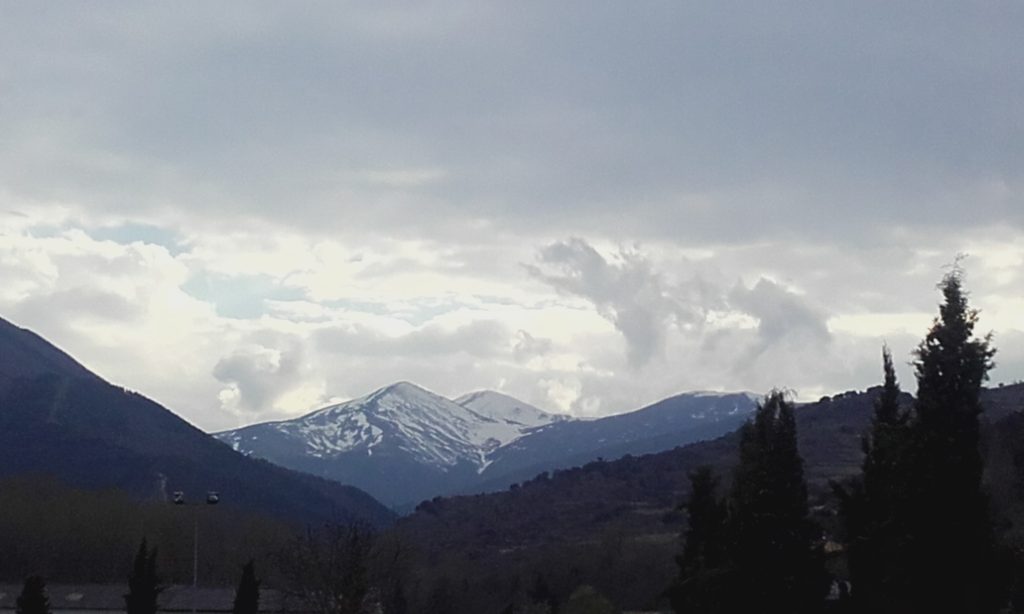
The only other monastery in Spain that I have been to is Monasterio de San Lorenzo de El Escorial (more commonly known as El Escorial) which is quite different, in addition to a monastery, it was also part of King Philip II summer palace so it also contains beautiful, luxurious rooms. It is very close to Madrid, making it a perfect day-trip. Yuso is much prettier on the outside than El Escorial, probably because El Escorial is BIG and imposing, even the stone itself seems very cold. Yuso seems warmer, more inviting.
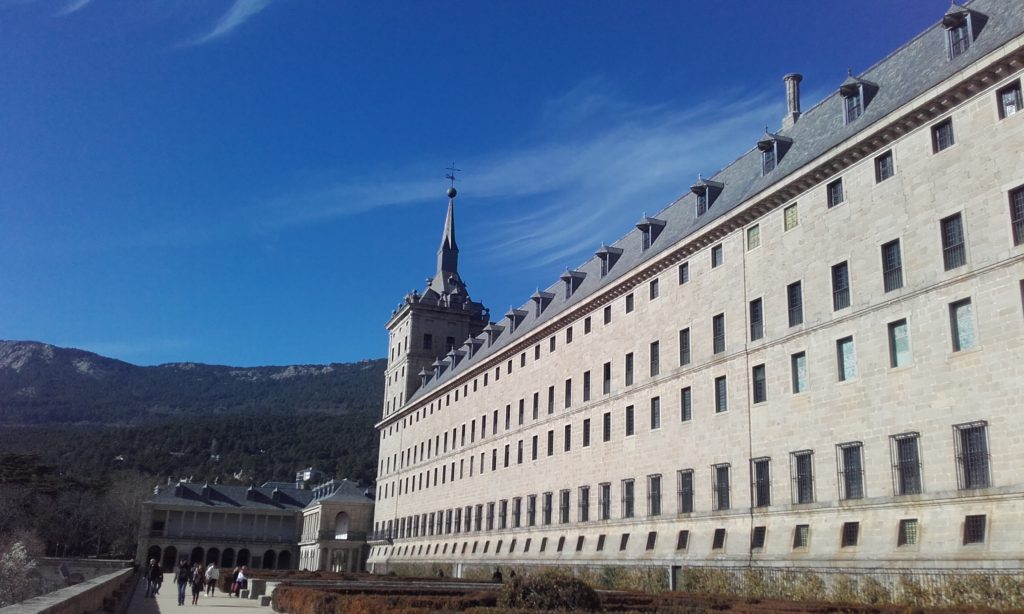
I wanted to come to Yuso to see the first words written in Castilian Spanish and in Basque. I didn’t expect that the whole visit would be so fascinating, it was action-packed with many beautiful, interesting, unique parts, making it impossible to pick a favourite. The 1 hour tour takes you on a comprehensive visit, there is a part where monks still live, we do not enter here but we see all the rest. Just to note, you must go on a tour, there is no option of looking around yourself. My tour guide was excellent and the woman I was staying with reliably informs me that all the tour guides are. As she has been there many times with various au-pairs, she should definitely know!
Read on to hear about some of the features of Yuso Monastery that make visiting it extremely worthwhile – let me attempt to inspire you to visit!
- The corridor of the Upper Cloister is beautifully painted with scenes of San Millán’s life/miracles.
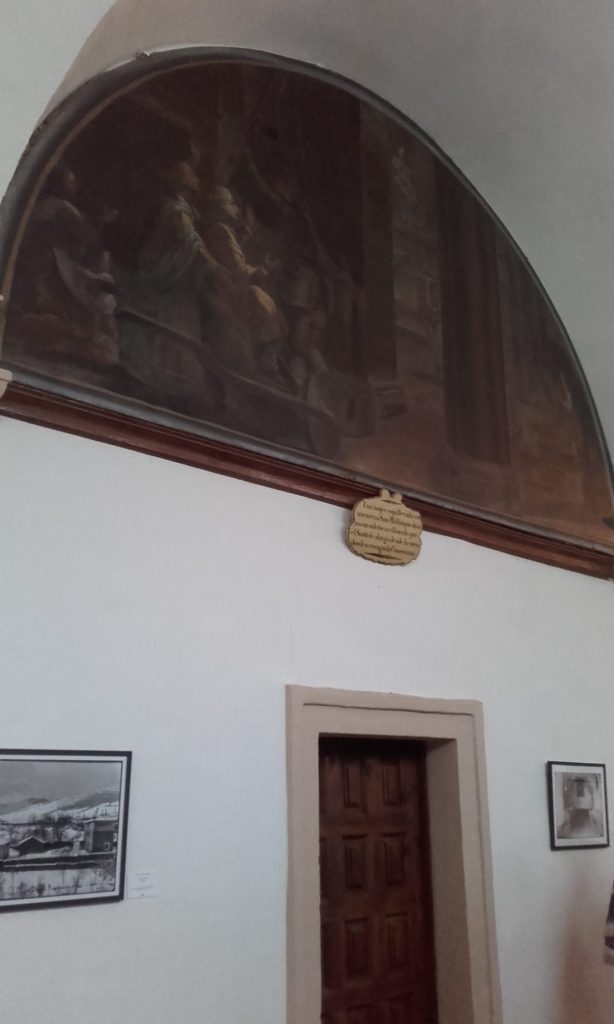
- The books which holds the first words in Castilian Spanish (castellano) and Basque (euskadi) can be seen. This is the highlight of the tour but there are many other surprises to come! Yuso is a part of El Camino de la Lengua Castellana as a result of its literary importance. There are a number of locations in Spain that are also part of it, such as the walled town of Ávila, located close to both Madrid and Salamanca. Yuso is clearly an important literary location, and is even more so due to the fact that the poet Gonzalo de Berceo was also born in the area.
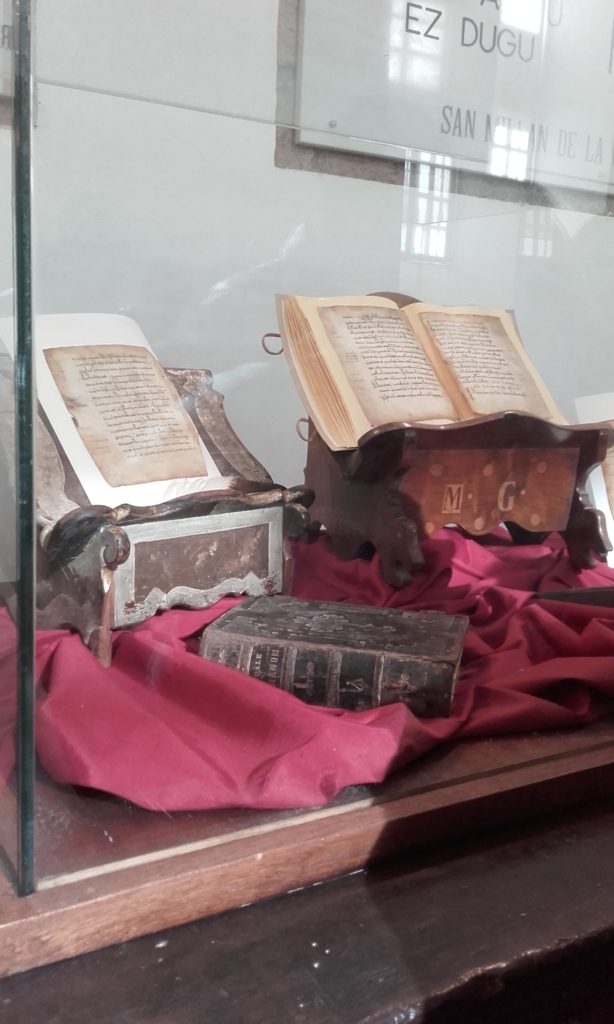
- There is a lovely Gothic cloister, see photo below. As well as being pretty, it is also historical. You will notice that the statues in the niches have no hands, this is because they were damaged during The Napoleonic Wars.
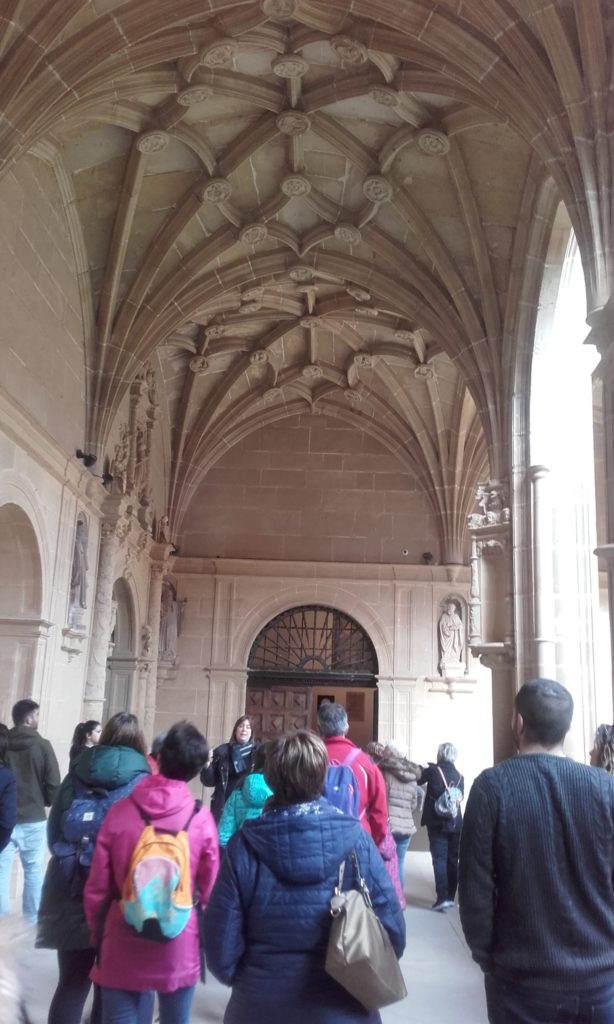
- The monastery’s church is truly beautiful. I took a lot of photos of it but I will not share them with you, I hope you will be inspired to go without seeing them, I don’t want to spoil all the surprises after all! I will share a photo of the impressive altar, there is a fantastic painting of San Millán with a sword of fire. To me, it looks a little like Death Rides a Pale Horse . . .
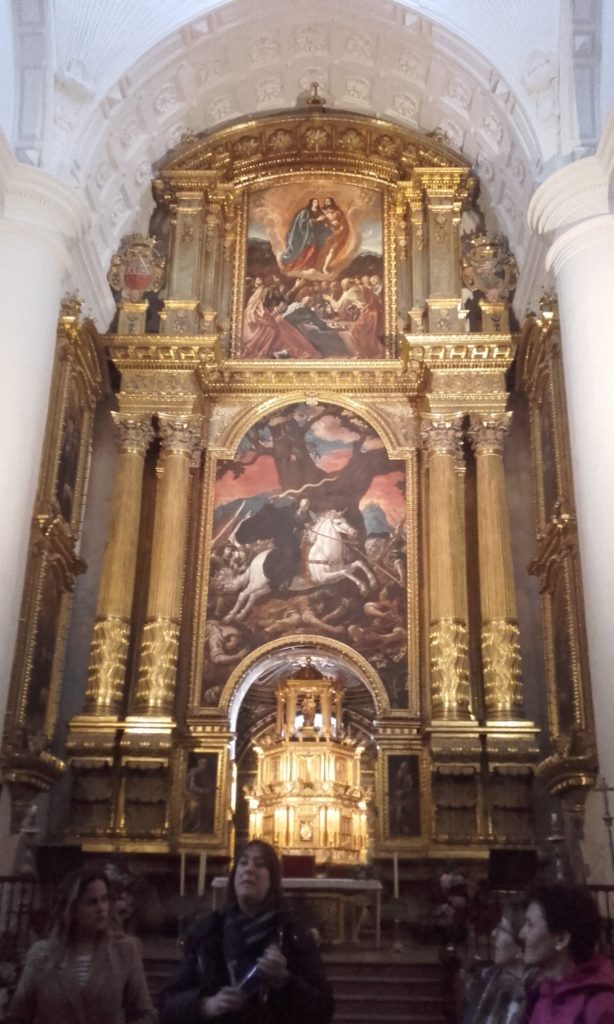
- Surprisingly, the Sacristy is for me one of, or the, favourite part of the tour. It is really beautifully painted. I tried to feast my eyes on its beauty as much as I could during the brief time we were there during our visit. The 4 seasons are depicted and there also various paintings adorning the walls.
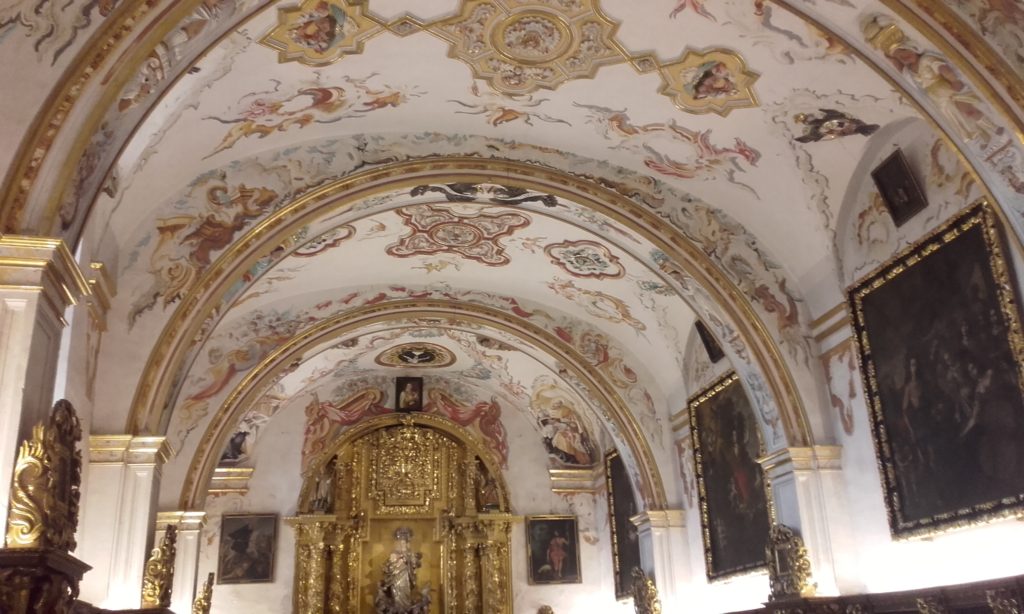
- The choir books are also very impressive. They are BIG. I won’t show you how beautifully they are painted, that can be a surprise! They are stored in very special, specific conditions, as you can see below.
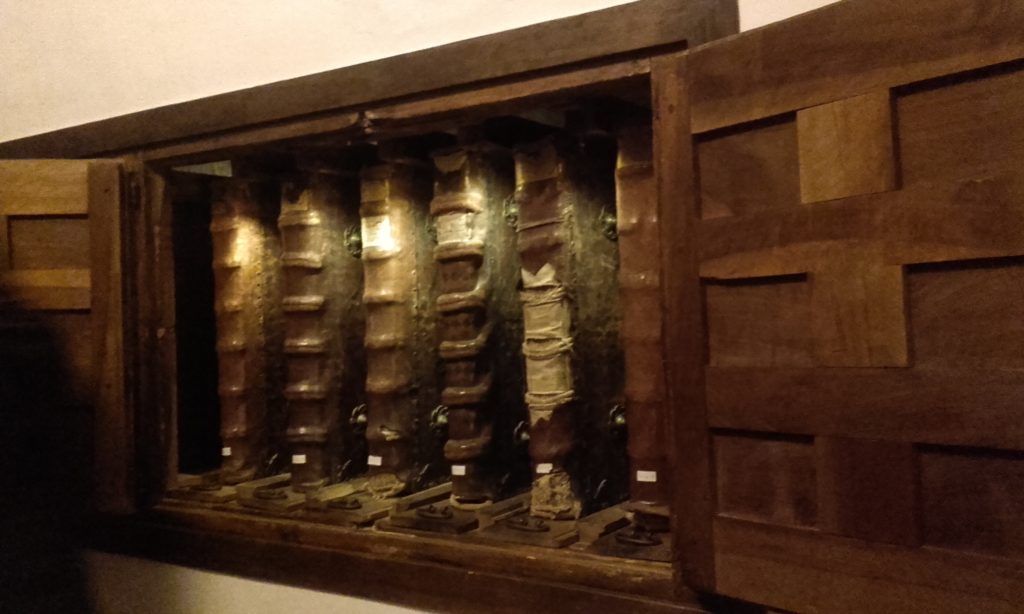
- The remains of San Millán are held within a box with ivory decorations. San Millán was a hermit who died very close to the location of Yuso Monastery. He used to be the patron saint of Spain, now Santiago is. He is still the patron saint of La Rioja.
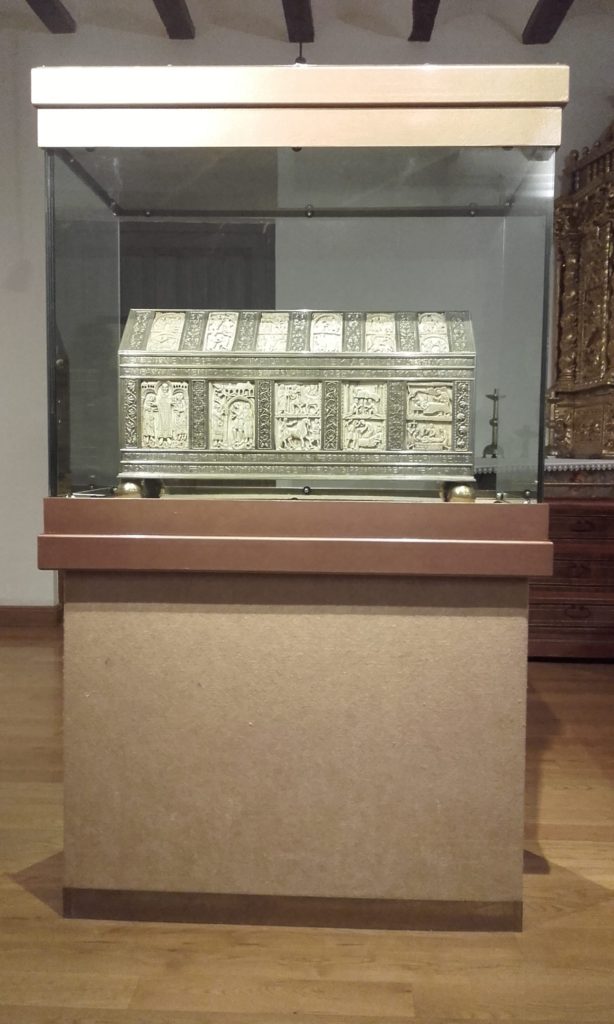
I would absolutely recommend a visit to Yuso. If you are in La Rioja then it should be one of your top things to see. You can learn a lot and see a lot of beauty too. It is one of my favourite things I did during my 3 months here.
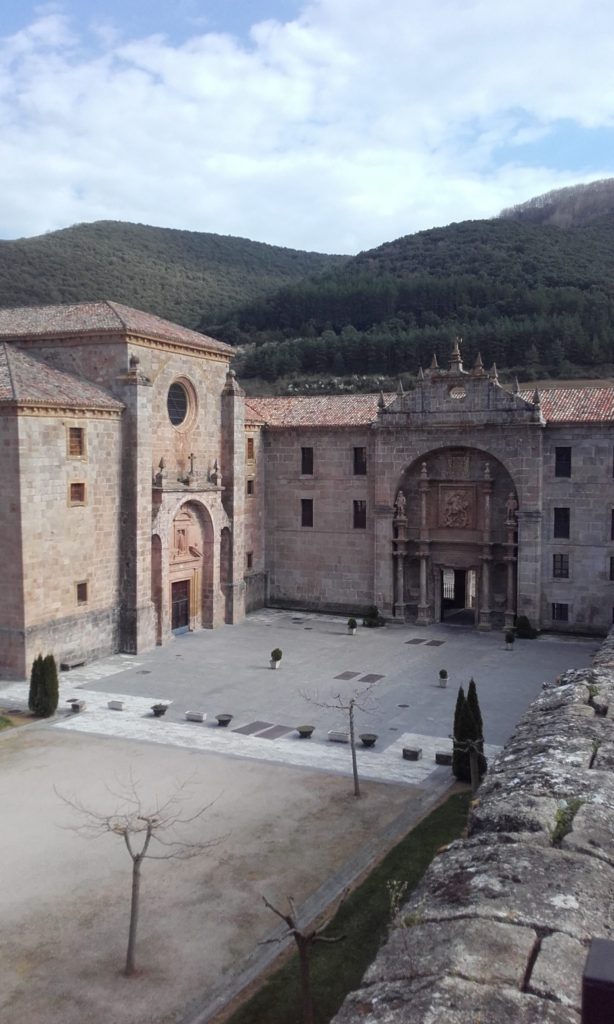
Address:
It is located in the town of San Millán de la Cogolla
Opening times:
Summer hours (from Easter to September):
Monday: Closed (except during August)
Tuesday to Sunday: 10:00 – 13:30 and 16:00 – 18:30
Winter hours (from October to Easter):
Monday: Closed
Tuesday to Saturday: 10:00 – 13:00 and 15:30 – 17:30
Sunday: 10:00 – 13:00
NOTE: if you are in a group of over 20 people then you must book in advance. If not, then just turn up and buy your ticket at the desk.
Website:
http://www.monasteriodeyuso.org/
Admission fee:
General: €7
OAP (over 65): €5
Groups (over 20 people): €4.50
Children (7-15 years old): €3
Children (under 7): FREE
NOTE: you cannot go on a self-guided tour, you must go with a tour guide – it is included in your admission fee.
Toilets:
Yes
Is there a gift shop?
Yes
Can I take photographs:
Yes
Is it somewhere I can go with children?
Yes, the tour lasts around 1 hour so it might be a bit long for smaller children but they should enjoy looking at the beautiful objects, especially the big choir books.
So that’s all for today. Next week we will be looking at Calahorra, one of my favourite cities in all of La Rioja. It is famous for its vegetables and its Roman past.
